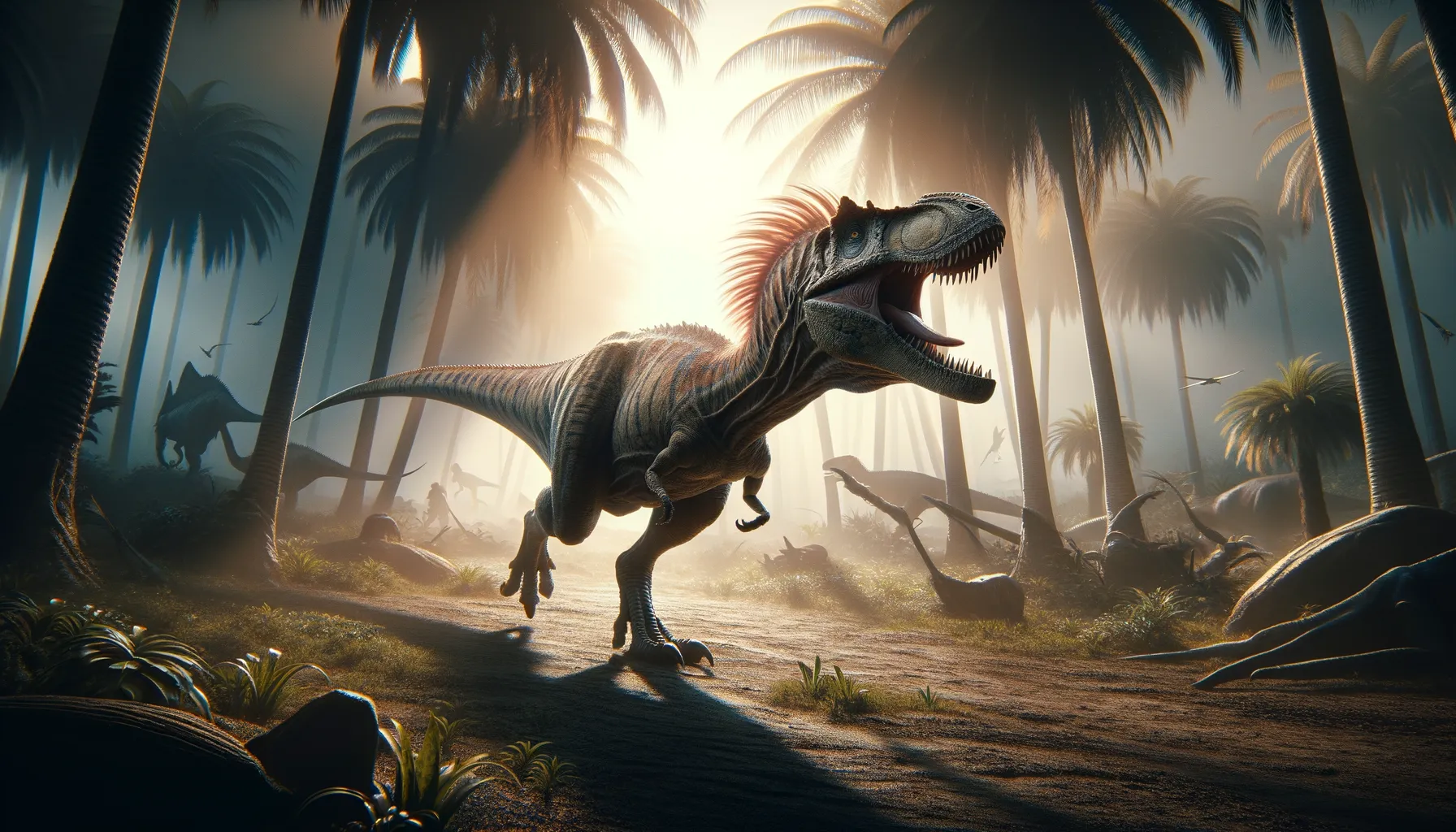
Afrovenator
Agile predator of ancient African lands.
Period
Jurassic
Length
Roughly 8 to 9 meters long.
Height
Approximately 2.5 meters tall at the hip.
Weight
Weighed about 1 to 1.5 tonnes.
Afrovenator was a predatory dinosaur that roamed the lands of what is now Africa during the Jurassic period. Known for its slender, agile build, it was a formidable hunter. This dinosaur is crucial in understanding the diversification of theropod dinosaurs in the region. Its discovery in the Sahara Desert shed light on the widespread nature of carnivorous dinosaurs across ancient continents.
Diet
Afrovenator was a carnivore, primarily preying on smaller dinosaurs and potentially scavenging carcasses. Its teeth and claws were adapted for slicing through flesh.
Hunting
This dinosaur likely hunted alone or in small groups to ambush prey. It used its speed and agility to pursue and overwhelm its targets.
Environmental challenges
Living in a semi-arid environment, Afrovenator faced challenges such as seasonal droughts and competition for resources. The fluctuating climate might have influenced its migratory patterns. Predation pressure and competition with other theropods could also have been significant challenges.
Speed
It could run at moderate speeds, agile for its size.
Lifespan
Estimated to live around 20 to 30 years in the wild.
First discovery
Discovered in 1993 in the Sahara Desert, Niger.
Fun Facts
- Afrovenator was a theropod dinosaur, which means it was a meat-eating dinosaur that walked on two legs.
- It lived during the mid-Jurassic period, approximately 165 million years ago.
- Afrovenator means 'African hunter' due to its discovery in Africa and its predatory nature.
- The first Afrovenator fossils were found in 1993 in the Sahara Desert of Niger.
- Afrovenator was relatively lightweight for a predator, suggesting it was fast and agile.
- It had three long claws on each hand, which likely helped it catch prey.
- Unlike some of the larger theropods, Afrovenator was a medium-sized dinosaur, estimated to be about 8 meters long.
Growth and Development
Afrovenator hatchlings would have been vulnerable, relying on rapid growth to ensure survival. Juveniles possibly lived in dense foliage to avoid predators, emerging as they matured. Growth rates would have varied with environmental conditions and resource availability.
Habitat
Afrovenator inhabited semi-arid regions of Africa, with sparse vegetation and seasonal water availability. These conditions required adaptation to both hunting and hiding from larger predators. It likely utilized open areas for hunting and wooded areas for nesting.
Interaction with other species
Afrovenator probably competed with other predators for food. It may have had symbiotic relationships with smaller species, benefiting from leftovers. Interactions with herbivorous dinosaurs were likely limited to hunting scenarios.
Natural lifespan
Its natural lifespan was around 20 to 30 years.
Reproduction
Like many theropods, Afrovenator likely laid eggs, with nests built in secluded areas. The adults may have guarded their young until they were old enough to fend for themselves. Little is known about their breeding and parental behaviors.
Social behaviour
While hunting alone, it may have exhibited some social behaviors during breeding seasons. Possible pack behavior would have supported hunting and raising young. Interactions were likely driven by food sources and breeding needs.
Fossil locations
Fossils have been primarily found in the Sahara Desert, particularly in Niger. This location suggests a once-diverse ecosystem supporting various life forms. The findings helped deepen the understanding of Jurassic theropods in Africa.
